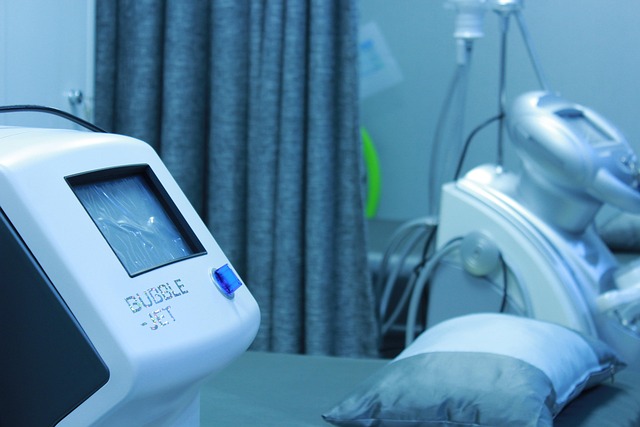Skin tags, influenced by genetics and friction, can be removed with a laser procedure. This non-invasive method breaks down tissue, but regrowth is possible. Proper post-care, including keeping the area clean and protected from sun, minimizes regrowth. Balanced diet, exercise, and regular check-ups reduce recurrence risk. Regular monitoring for new growths is crucial. Multiple sessions may be needed; alternative treatments include cryosurgery or topical creams. Consulting professionals ensures informed decisions about laser skin tag removal procedure effectiveness.
Skin tags, those tiny, harmless growths, can be a nuisance. If you’ve undergone laser skin tag removal, preventing their return is key to achieving long-lasting results. This comprehensive guide delves into the world of laser skin tag removal, offering insights on understanding these tags, the procedure, post-care, and crucial lifestyle adjustments to keep them at bay. Learn about effective tips for optimization and alternative treatments, ensuring you stay tag-free.
- Understand Skin Tags: Causes and Risk Factors
- Laser Removal: The Procedure and Aftercare
- Post-Laser Care: Tips for Optimizing Results
- Lifestyle Changes to Prevent Recurrence
- Regular Monitoring: Spotting Early Signs of Return
- Alternative Treatments for Persistent Skin Tags
Understand Skin Tags: Causes and Risk Factors

Skin tags are small, soft bumps that grow on the skin, often appearing as hanging pieces of tissue. They are typically harmless but can be a nuisance and a cosmetic concern for many individuals. Understanding their causes is essential in preventing their recurrence after laser removal, a common procedure for their elimination.
Several factors contribute to the development of skin tags, including genetics, weight fluctuations, certain skin conditions like eczema or dermatitis, and friction or irritation against the skin. They are more prevalent in areas where skin rubs against itself, such as the neck, armpits, groin, and back. Laser skin tag removal procedures have a high success rate but may not eliminate all tags, especially in individuals with multiple risk factors. Knowing these causes can help in adopting preventive measures to reduce the chances of regrowth after treatment.
Laser Removal: The Procedure and Aftercare

Laser skin tag removal is a precise procedure that utilizes targeted pulses of light to break down the tissue of skin tags. During the treatment, a specialized laser is gently applied to the affected area, effectively detaching the skin tag from its base. This non-invasive approach offers a permanent solution by preventing regrowth in most cases. Aftercare plays a crucial role in ensuring optimal results and minimizing the risk of recurrence.
Following the procedure, patients can expect some mild redness and swelling, which typically subside within a few days. It is essential to adhere to post-treatment instructions, including keeping the area clean and protected from direct sunlight. The removal of skin tags in private areas like Blackburn can be effectively managed with expert care, ensuring a safe and effective laser treatment for skin tags on face or other parts of the body. What to expect after laser skin tag removal varies from person to person, but proper aftercare will help speed up healing and reduce the chances of unwanted returns.
Post-Laser Care: Tips for Optimizing Results

After undergoing the laser skin tag removal procedure, proper post-care is essential to ensure optimal results and prevent regrowth. Here are some tips to aid in your recovery and maintain smooth, clear skin. Firstly, keep the treated area clean and moisturized. Gently wash with a mild cleanser, avoiding harsh scrubs or products containing alcohol, which can irritate the skin. Pat dry with a soft towel, being gentle around the treated areas.
Moisturizing is crucial, especially during the initial healing phase. Opt for hypoallergenic, fragrance-free moisturizers to soothe and protect the skin. Protecting your skin from direct sunlight is vital; always wear sunscreen with a high SPF when going outdoors, as laser treatment can make your skin more sensitive to UV rays. Additionally, be mindful of your clothing choices, avoiding tight or itchy garments that might irritate the treated areas. Getting rid of stubborn skin tags with lasers effectively, but consistent care post-procedure is key to preventing their reoccurrence.
Lifestyle Changes to Prevent Recurrence

After undergoing laser skin tag removal, making certain lifestyle changes can significantly reduce the risk of tags reappearing. Maintaining a balanced diet rich in vitamins and antioxidants is key, as proper nutrition supports overall skin health. Regular exercise is also beneficial; staying active improves blood circulation, which helps eliminate dead skin cells and keeps your complexion vibrant.
In addition to these habits, being mindful of sun exposure is crucial. Protecting your skin from UV rays by wearing sunscreen daily prevents damage that could trigger tag regrowth. When considering laser skin tag removal for sensitive areas like the neck or armpits—a service provided at reputable clinics such as those in Newark-on-Trent and Doncaster—it’s important to follow up with regular check-ups. This ensures any new growth is caught early, making future treatments more effective.
Regular Monitoring: Spotting Early Signs of Return

Regular monitoring is a vital step in preventing skin tags from returning after laser removal. It’s essential to perform self-examinations frequently, paying close attention to any changes or unusual growths on your skin. Early detection plays a crucial role in managing skin tags effectively. By spotting their return at an initial stage, you can take prompt action and consult a dermatologist for appropriate treatment. This proactive approach ensures that even subtle signs of recurrence are addressed before they develop into more prominent and stubborn tags.
For those considering private skin tag removal Newark-on-Trent or exploring laser skin tag removal for large areas, understanding the potential for regrowth is key. Laser procedures offer precise targeting of skin tags, but complete eradication sometimes requires multiple sessions. Moreover, comparing laser vs radiofrequency for skin tags, each method has its advantages and may be recommended based on the specific concern and patient profile. Regular monitoring during and after treatment ensures that you stay ahead of any recurring issues.
Alternative Treatments for Persistent Skin Tags

If laser skin tag removal doesn’t yield permanent results, don’t despair; there are alternative treatments available to target and eliminate persistent skin tags. One popular option is cryosurgery, where liquid nitrogen is used to freeze and destroy the growths. This method is generally effective and offers a relatively quick procedure time. Another approach involves using topical creams or medications that can reduce the appearance of skin tags over time. However, these may require consistent application for optimal results.
For those seeking a more permanent solution, considering a private skin tag removal coventry service could be worthwhile. Many clinics now offer specialized treatments tailored to specific needs. Find a clinic offering laser skin tag treatment in your area and consult with professionals who can assess your condition and recommend the best course of action.
Preventing the recurrence of skin tags after laser removal involves a combination of post-procedure care, lifestyle adjustments, and regular monitoring. By following the tips outlined in this article, such as optimal aftercare, adopting healthy habits, and staying vigilant for early signs, you can significantly reduce the likelihood of skin tags returning. While laser skin tag removal procedure offers an effective solution, proactive measures are key to achieving long-lasting results and maintaining smooth, clear skin.
